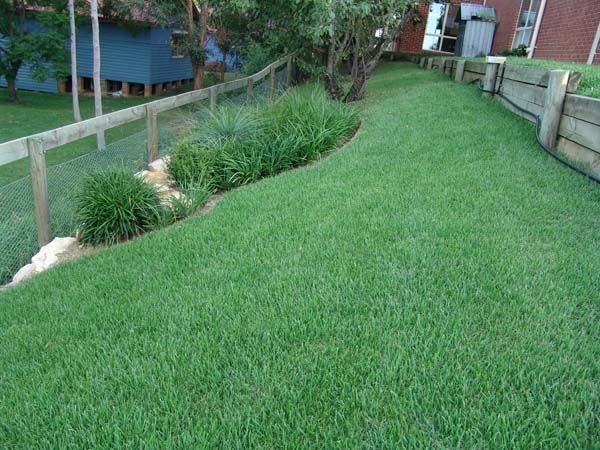Zoysia grass is a type of warm-season grass known for its resilience in the face of scorching temperatures, extended dry spells, and constant foot traffic. Originally from Asia, it has been a favorite in the United States for well over a century. Zoysia grass, originating from the warm regions of Southeast Asia, has become a beloved choice for lawns in hot southern states like Texas.
However, whether Zoysia grass is the right choice for your lawn depends on where you live in the country.
Its remarkable ability to endure scorching temperatures, extended droughts, and heavy foot traffic has earned it a place in the hearts of both sod farmers and homeowners seeking lush, resilient lawns.
Zoysia Grass Sod Facts
Varieties of Zoysia Grass
There’s no shortage of Zoysia grass types, each with its own unique characteristics. The original Zoysia grass, often known as “Amazoy” or “Meyers” grass, boasts a vibrant deep green hue, dense growth, and impressive resistance to drought and cold weather.
This makes it a top choice for homeowners looking for a dependable and visually appealing lawn. Another commonly encountered Zoysia grass is Zoysia japonica, while Zoysia matrella and Zoysia tenuifolia are also prevalent. These grasses are often celebrated as all-around solutions for various lawn issues, making them popular choices for yards.
For those interested in an alternative, there’s “Emerald” Zoysia grass, which, while typically laid as sod, can also be planted as plugs. It offers moderate shade tolerance but is sensitive to cold weather and may turn brown quickly. For a more DIY approach, “Zenith” Zoysia grass can be grown from seed. However, professional planting is advisable for the best chances of success.
Understanding Zoysia Grass
Zoysia grass thrives in warm-season climates and is less suitable for northern or cooler regions. Although some varieties exhibit better cold tolerance, as a general rule, Zoysia grass tends to brown and wither when exposed to cold temperatures. Additionally, it does not perform well in shaded areas, making it an ideal choice for the sunny landscapes of the southern United States.
Climate Considerations
Fact: Zoysia grass is well-suited for warm-season climates but less adaptable to colder regions. It finds its perfect home in areas with consistently warm weather. While some transition zones might seem tempting, they can still prove too chilly for Zoysia grass to flourish. Consequently, this grass variety is predominantly used in the southern states.
Sun and Shade Tolerance
Zoysia grass thrives in full sunlight. It’s at its healthiest and most vibrant when basking in the sun all day long. Even minimal shade from small trees or structures can adversely affect its growth.
Temperature Resilience
Fact: Its cold tolerance is limited, and it typically begins to turn brown when exposed to temperatures below approximately 50 degrees Fahrenheit (10 degrees Celsius). This transition can lead to an unsightly appearance during colder months
Zoysia grass is exceptionally heat-tolerant, making it a standout performer in hot climates. It can endure scorching temperatures without wilting, which is why it’s a preferred choice in such regions. However, its cold tolerance is limited. When exposed to chilly weather, most Zoysia grass types will quickly turn brown, causing an unsightly appearance. Due to its slow growth, it may take a while to recover in the spring.
Drought Resistance
While Zoysia grass is generally regarded as fairly drought-tolerant, its performance in this regard varies depending on local conditions. In slightly cooler regions, it exhibits greater drought tolerance.
Established Zoysia grass with deep root systems can endure longer periods without water. On average, it requires about 1 inch of water per week. Morning watering is recommended for established lawns, while early afternoon is suitable for newly planted grass.
Wear and Tear
Zoysia grass is remarkably resistant to wear and traffic, thanks to its dense growth and robust blades. It can handle occasional foot traffic and is often used in yards and even on baseball fields. However, it’s not the best choice for areas with continuous heavy activity, as its slow growth means it takes a long time to recover.
Wrapping Up
From the popular Zeon Zoysia Grass Sod to other options like centipede sod and Empire Zoysia, each type brings unique characteristics and advantages to the table. Understanding the best time to lay sod, such as during the warmer months, ensures a successful establishment of your Zoysia grass lawn. It’s essential to consider factors like climate, sun and shade tolerance, temperature resilience, drought resistance, and wear resistance when deciding if Zoysia grass is the right choice for your specific location. Whether you seek the dense, lush appeal of a Zeon Zoysia lawn or the resilience of centipede grass sod, Zoysia grass provides a range of options to suit your landscaping needs. Atlanta Sod Farms is here to offer valuable insights into these Zoysia grass sod facts, helping you make informed decisions about your lawn’s future.
Read more articles for recifest




